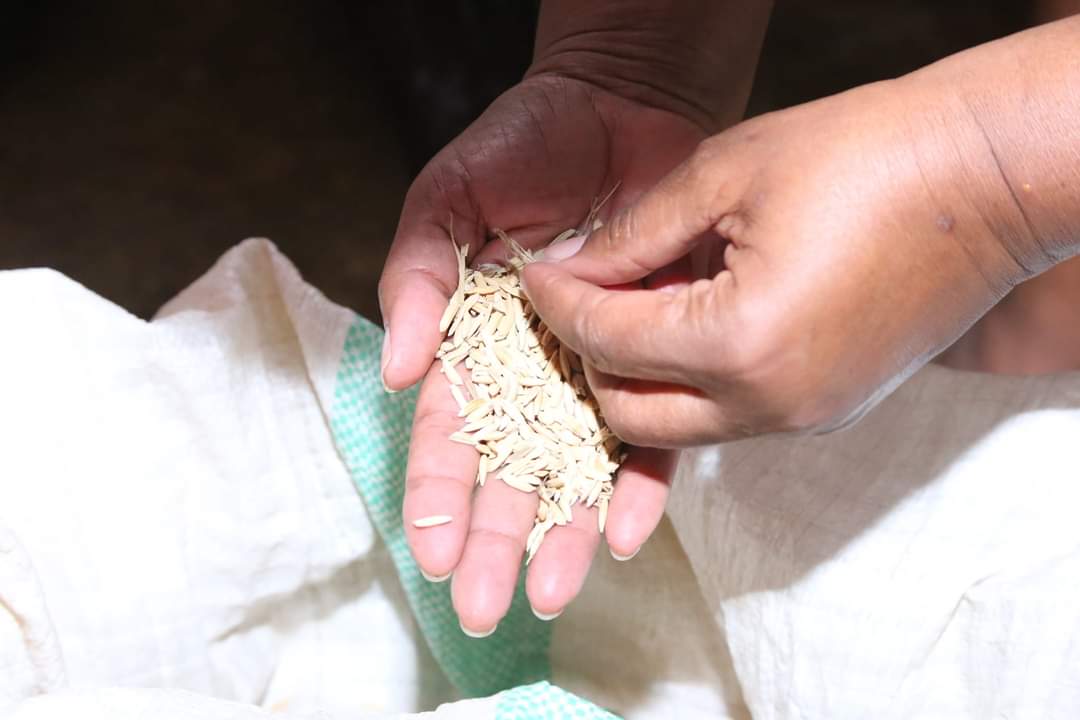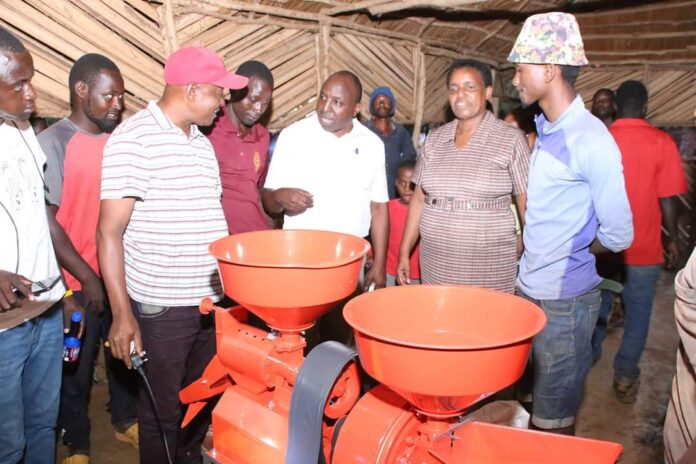By Albert Mwangeka
Taita- Taveta County, Kenya: In a move that will significantly benefit local rice farmers, a rice mill worth KES 45 million is being established in Taveta Sub-County, Taita Taveta County. The new facility is expected to provide a much-needed boost to the local rice farming community, who have been forced to sell their unprocessed rice to intermediaries at low prices.
The mill will work in conjunction with other mobile milling machines, effectively doubling the income derived from rice farming.
Rice farmers in Mboghoni Ward, Taveta, will soon have the capacity to produce 1.5 tonnes of rice per hour, thanks to the mobile rice milling machines provided by the National Government to enhance market prices.
While evaluating a machine in Mboghoni, Dr. Domnic Menja, the President’s Food Security Advisor, underscored its significance in rice processing, which could potentially elevate the current price from KES 40 to KES 85.

The project, a joint venture between the Office of the President and the County Government of Taita Taveta, aims to empower local rice farmers, reduce rice imports, and increase farmers’ income.
Deputy Governor H.E. Christine Kilalo announced that the tender to procure and install the plant at Mboghoni ward has already been advertised. She highlighted the factory’s role in enhancing rice production in the region during a site visit to the proposed location.
She expressed concern over the county’s revenue loss and the farmers’ impoverishment due to exploitation by middlemen. Kilalo pointed out that brokers buy the unprocessed grain for as low as Sh40 per kilo and sell it back at a higher price after value addition in Tanzania.
The deputy governor also mentioned, “The plant will generate employment opportunities for the local population. This announcement comes as the county is making efforts to drain excess water in Buruma rice fields for large and medium-scale farming.”
Kilalo encouraged farmers to seize this opportunity as the county initiates plans to establish the rice mill. Upon completion, the factory will enable farmers to produce high-quality rice that meets consumer standards and preferences.
The rice factory will also generate by-products like rice bran and rice husks, which can be utilized as animal feed and fuel.
Erickson Kyongo, the executive of Agriculture, Livestock, and Blue Economy, stated that the department is also aiding farmers to produce high-quality grain and minimize post-harvest losses.
According to the Food and Agriculture Organisation (FAO), an estimated 10-15 percent of rice is lost during post-harvest operations in developing countries due to factors like poor handling, storage, transportation, pests, diseases, and weather.
Kyongo emphasized the need to increase rice farming from the current 14,000 acres to 36,000 acres to enhance production, maintain the market, and boost income.
Kenya produces approximately 200,000 metric tonnes of rice annually, which is only half of the consumption demand, leading to a deficit of between 500,000 to 600,000 metric tonnes. This deficit is compensated by imports, primarily from Pakistan, Thailand, India, and Vietnam.
To bridge this supply gap, the country requires at least 450,000 acres of land under production to achieve food security.














